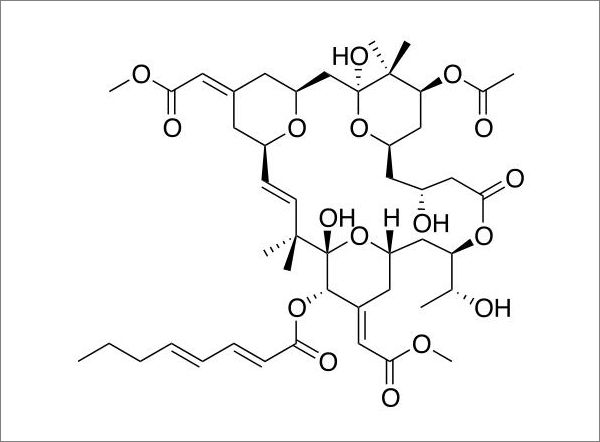Medical expert of the article
New publications
An effective drug against latent HIV has been synthesized
Last reviewed: 01.07.2025

All iLive content is medically reviewed or fact checked to ensure as much factual accuracy as possible.
We have strict sourcing guidelines and only link to reputable media sites, academic research institutions and, whenever possible, medically peer reviewed studies. Note that the numbers in parentheses ([1], [2], etc.) are clickable links to these studies.
If you feel that any of our content is inaccurate, out-of-date, or otherwise questionable, please select it and press Ctrl + Enter.
Members of a new family of biologically active molecules called bryologists activate hidden "reservoirs" containing latent HIV that otherwise make the disease completely inaccessible to antiretroviral drugs.
Thanks to antiretroviral drugs, the diagnosis of AIDS has not been a death sentence for almost twenty years. At the same time, highly active antiretroviral therapy (HAAT) still does not lead to a complete cure. At the same time, patients must strictly adhere to a regular regimen of taking drugs that have many side effects. And if, for example, even in the USA, undergoing such a lengthy procedure is difficult (financially), then in developing countries it is practically impossible.
The main problem with VAAT is that it is unable to reach the virus hidden in the so-called proviral reservoirs - T-cells, inside which the dormant HIV hides. Even after all active viral particles have been destroyed, missing just one dose of an antiretroviral drug can lead to the previously dormant virus becoming active again and instantly attacking the host organism, and the drug used until now stops working! To this day, no one has been able to offer a remedy that can somehow affect HIV hiding in cells.

But scientists from Paul Wender's laboratory at Stanford University (USA) seem to have come close to solving the problem.
The researchers synthesized a whole library of bryologists whose structure is based on a very hard-to-find natural substance. As shown, the new compounds successfully activate latent HIV reservoirs with an efficiency equal to or superior to the efficiency of the natural analogue. Hopefully, the results of this work will finally give doctors an effective tool with which they can completely eradicate the hated virus from the body. A report on the study is presented in the journal Nature Chemistry.
And a little about how it all began... The first attempts to reactivate the latent form of HIV were inspired by observations of the "work" of healers from the Samoan archipelago. Having conducted a thorough study of the bark of the mamala tree, which grows in Samoa and is traditionally used to treat hepatitis, ethnobotanists discovered that it contains a biologically active component, prostratin. The substance activates protein kinase-C, an enzyme that forms a signaling pathway necessary for the reactivation of the latent virus. It was later shown that prostratin is not the only or most effective molecule capable of binding to kinase.
The bryophyte colonial marine organism Bugula neritina synthesizes a protein kinase-C activator that is many times more effective than prostatin. Scientists believed that this molecule, called bryostatin-1, had great potential not only for combating HIV infection, but also for treating cancer and Alzheimer's disease. And everything would have been fine, but the clinical trials that had begun had to be curtailed due to the extreme unavailability of this natural drug. The fact is that to obtain just 18 g of bryostatin, it is necessary to process 14 tons of the living organism Bugula neritina. The National Cancer Institute, which conducted the trials, decided to wait until an accessible method for obtaining a synthetic analogue was developed.
The scientific group of Professor Wender, in whose laboratory the synthesis of prostratin and its analogues had previously been developed, took on the creation of a method for obtaining bryostatin. As a result, the scientists managed to offer a very effective approach to the synthesis of bryostatin and its six analogues that do not exist in nature. In laboratory tests on special samples of infected cells, it was shown that bryostatin and its analogues are 25-1,000 times more effective than prostratin. In addition, in in vivo experiments on animal models, these substances demonstrated a complete absence of toxic effects.

